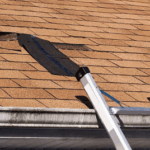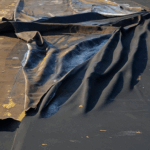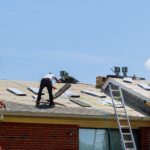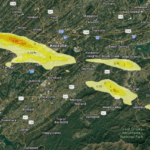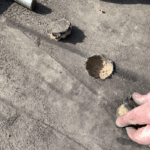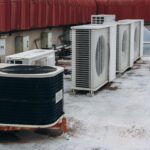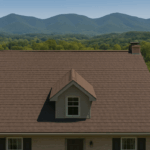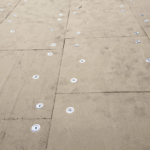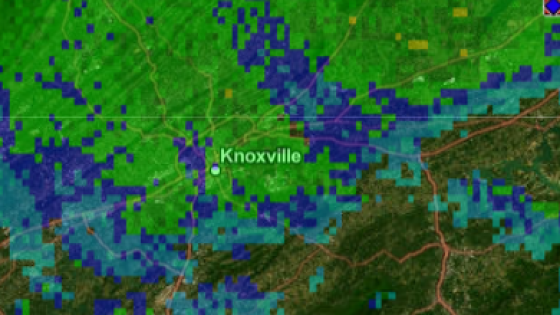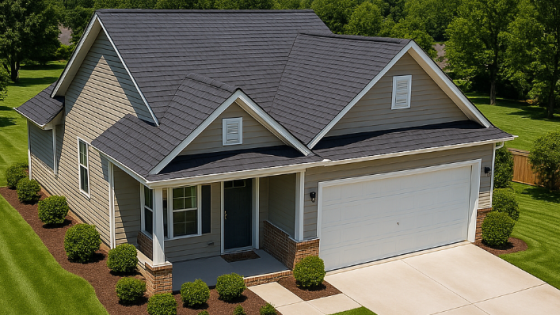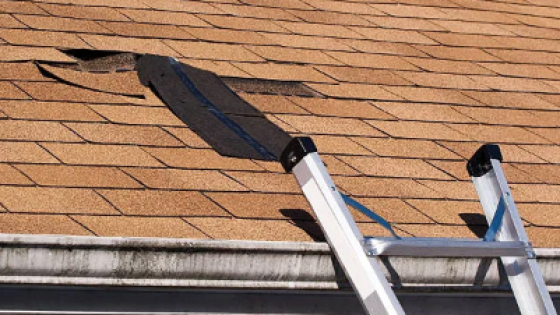Wall flashings are crucial components in roofing systems, serving as barriers to direct water away from walls and joints, preventing leaks and water damage.
If you reside in Knoxville, TN, understanding the costs associated with replacing wall flashings is essential for maintaining your home’s integrity.
If you’re concerned about your flashing or your roof is leaking, this post will help identify costs, factors influencing these costs, and additional considerations for homeowners in Knoxville.
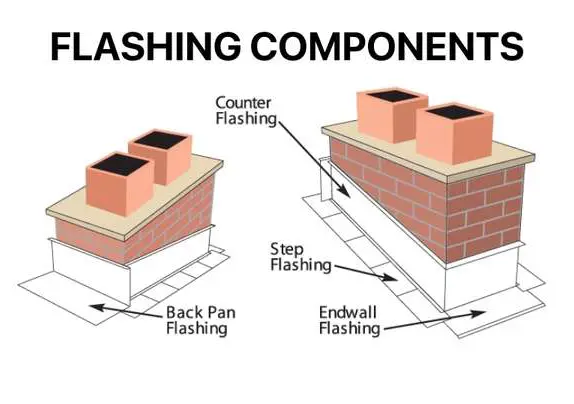
Understanding Wall Flashings
Wall flashings are strips of metal or other waterproof materials installed at various points on your roof where it intersects with walls, chimneys, or other structures. They are designed to prevent water infiltration by directing it away from these vulnerable areas.
Types of Wall Flashings
Step Flashing
Step flashing is typically used where a sloped roof meets a vertical wall. It consists of multiple pieces of flashing, each bent at a 90-degree angle, that overlap each other and are installed step-by-step along the roof’s edge.
Applications:
- Ideal for roofs with shingle roofing material.
- Commonly used around dormers and chimneys.
Benefits:
- Provides excellent protection against water infiltration.
- The overlapping design ensures that water is directed away from the wall and roof intersection.
Installation Process:
Preparation: The roof surface is cleaned, and old flashing is removed.
Placement: Each piece of step flashing is placed over the shingle below and under the shingle above.
Securing: Flashings are nailed to the roof deck, ensuring they are securely fastened.
Overlap: Each subsequent piece overlaps the previous one, creating a continuous barrier.
Counter Flashing
Counter flashing is installed over step flashing or base flashing to provide additional protection. It is typically embedded into the masonry of a wall or chimney and covers the top of the step flashing.
Applications:
- Commonly used with step flashing to seal the joint where the roof meets a vertical surface.
- Ideal for chimneys, parapet walls, and where the roof meets brick or stone walls.
Benefits:
- Provides a second layer of protection against water infiltration.
- Enhances the durability and longevity of the flashing system.
Installation Process:
Cutting Slots: Slots are cut into the mortar joints of the masonry.
Inserting Flashing: Counter flashing is inserted into the slots and bent downward to cover the step flashing.
Securing: Flashing is secured with masonry screws or sealant.
Sealing: The top edge of the counter flashing is sealed to prevent water from entering the slots.
Drip Edge Flashing
Drip edge flashing is a metal strip installed at the edges of the roof. It is designed to direct water away from the fascia and into the gutters.
Applications:
- Used at the eaves and rakes of the roof.
- Suitable for all types of roofing materials.
Benefits:
- Protects the roof deck and fascia from water damage.
- Prevents water from getting under the roofing materials, reducing the risk of rot and mold.
Installation Process:
Preparation: The roof edge is cleaned, and the old drip edge is removed if necessary.
Placement: The drip edge is placed along the roof’s edge, extending over the fascia.
Securing: Flashing is nailed or screwed into place, ensuring it is securely fastened.
Overlap: Each piece of drip edge overlaps the previous one to create a continuous barrier.
Valley Flashing
Valley flashing is used in the valleys where two roof slopes meet. It channels water away from the valley and into the gutters.
Applications:
- Installed in the valleys of roofs, which are especially prone to water accumulation.
- Suitable for roofs with complex designs and multiple slopes.
Benefits:
- Provides robust protection against water infiltration in roof valleys.
- Ensures proper drainage, reducing the risk of water damage.
Installation Process:
Preparation: The valley area is cleaned, and any old flashing is removed.
Placement: Valley flashing is placed along the valley, extending from the eaves to the ridge.
Securing: Flashing is nailed or screwed into place, ensuring it is securely fastened.
Sealing: The edges of the flashing are sealed to prevent water from seeping underneath.
Cap Flashing
Cap flashing, also known as coping flashing, is installed on top of parapet walls and other wall terminations. It prevents water from entering the wall assembly.
Applications:
- Used on parapet walls, retaining walls, and freestanding walls.
- Suitable for both flat and sloped roofs.
Benefits:
- Prevents water from entering and damaging the wall structure.
- Enhances the overall aesthetics of the wall and roof intersection.
Installation Process:
Preparation: The top of the wall is cleaned, and any old flashing is removed.
Placement: Cap flashing is placed on top of the wall, extending over both sides.
Securing: Flashing is fastened with screws or masonry anchors.
Sealing: The edges of the flashing are sealed to prevent water infiltration.
By understanding the different types of wall flashings and their specific applications, homeowners in Knoxville, TN, can make informed decisions when it comes to maintaining and protecting their roofing systems. Each type of flashing plays a crucial role in ensuring that your home remains dry and secure, regardless of the weather conditions.
Cost of Replacing Wall Flashings in Knoxville, TN
The cost to replace wall flashings can vary based on several factors including the type of flashing, materials used, labor costs, and the complexity of the installation. Here is a breakdown of potential costs:
| Type of Flashing | Material Cost per Linear Foot | Installation Cost per Linear Foot | Total Cost per Linear Foot |
|---|---|---|---|
| Step Flashing | $1.50 - $3.00 | $4.00 - $6.00 | $5.50 - $9.00 |
| Counter Flashing | $2.00 - $4.00 | $5.00 - $7.00 | $7.00 - $11.00 |
| Drip Edge Flashing | $1.00 - $2.50 | $3.00 - $5.00 | $4.00 - $7.50 |
| Valley Flashing | $2.50 - $4.50 | $4.00 - $6.50 | $6.50 - $11.00 |
| Cap Flashing | $3.00 - $5.00 | $5.00 - $8.00 | $8.00 - $13.00 |
Factors Influencing Costs
Material Quality: Higher quality materials such as copper or stainless steel will increase costs.
Labor: Skilled labor costs can vary, especially in different regions within Knoxville.
Complexity: Roofs with multiple intersections, steep pitches, or additional structures like chimneys can complicate the installation process.
Benefits of Replacing Wall Flashings
Prevents Water Damage: Properly installed flashings protect your home from leaks and water damage.
Longevity: High-quality flashings can last many years, providing long-term protection.
Increased Property Value: Maintaining your roofing system can enhance your property’s value.
FAQs about Wall Flashings
Wall flashings can be made of various materials including aluminum, copper, stainless steel, and galvanized steel.
Wall flashings should be inspected regularly and typically replaced every 20-30 years, depending on material and environmental conditions.
While possible, replacing wall flashings is best left to professional roofing contractors due to the precision required to prevent leaks.
Yes, signs include visible rust, cracks, loose sections, and water stains on interior walls.
The replacement process can take from a few hours to a few days, depending on the complexity of the roof.
Insurance may cover damage from specific events but typically does not cover routine maintenance.
Copper flashings are durable, corrosion-resistant, and have a long lifespan, making them a premium choice.
Contact a professional roofer immediately to inspect and repair the damage to prevent further issues.
Replace Wall Flashings
Replacing wall flashings is a vital aspect of maintaining your home’s roofing system. In Knoxville, TN, the costs can vary, but investing in quality materials and skilled labor ensures long-term protection for your home. Regular inspections and timely replacements can save homeowners from costly repairs in the future. For reliable service and professional installation, consider contacting one of the top-rated roofing companies in Knoxville to ensure your home remains safe and dry.



